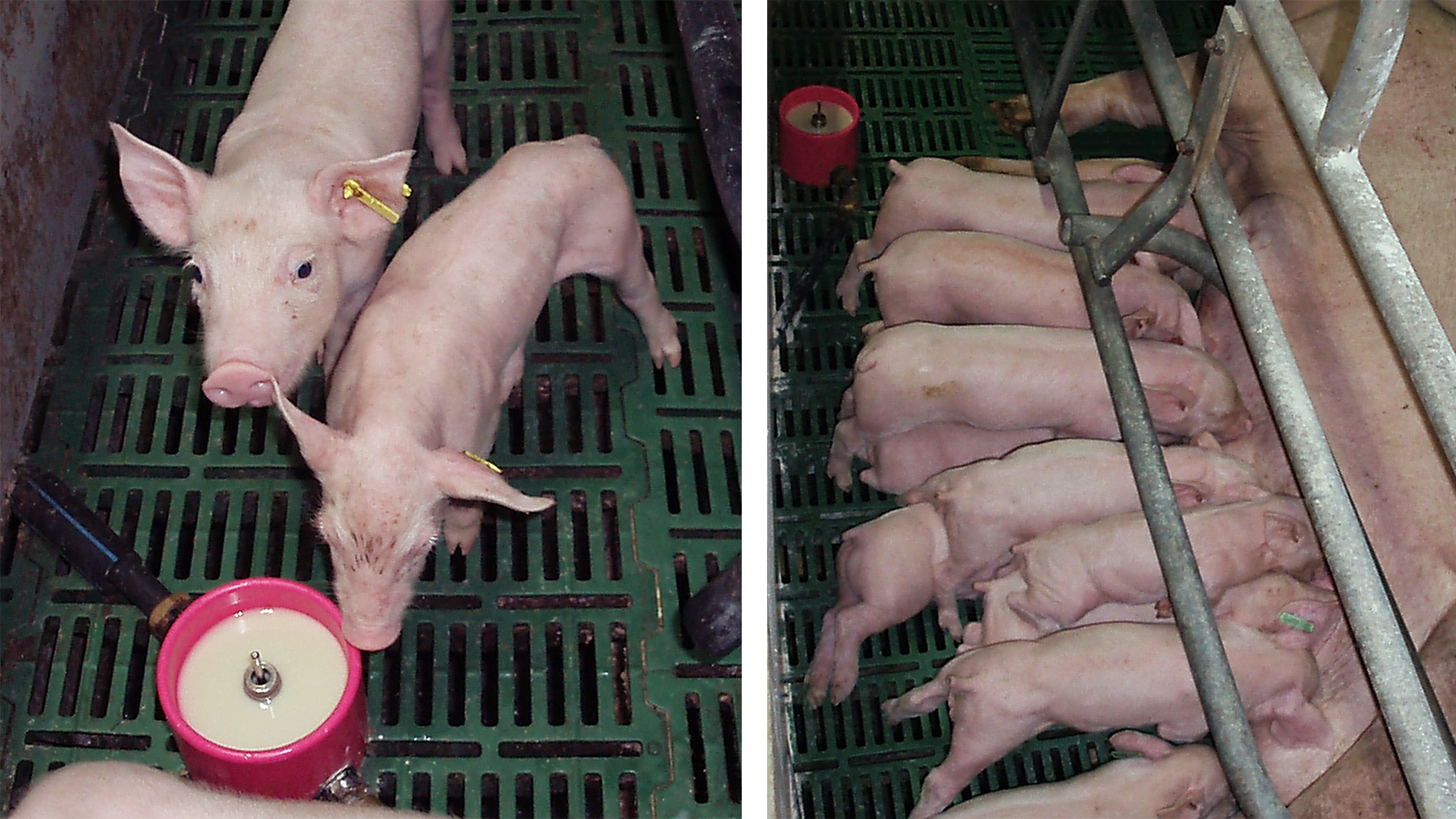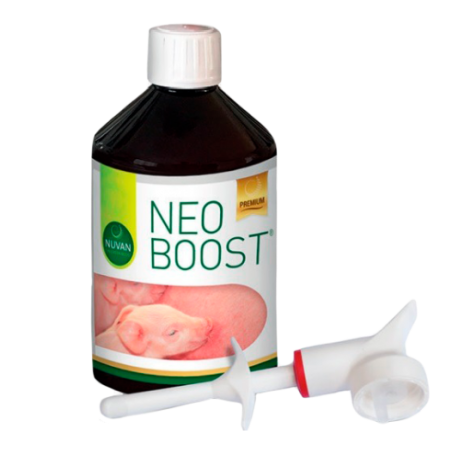Trying to minimize the number of movements on farrowing day and maximazing the number of piglets per sow, are the characteristics of a system that reduces extra handling in the farrowing unit and can improve pig performance in later stages.
The following article tries to evaluate different types of piglet management in the farrowing unit of the same pig farm, and calculate its economic value to an age close to slaughter. This should allow us to know which one provides the best financial results, so it can be taken as a reference point for extrapolation to other pig farms of the same characteristics.

Introdution
In recent decades, pig production has experienced great genetic progress, achieving an increase in litter size and survival of young piglets, which results in an increase in piglet production per sow per year..
Different management interventions in the farrowing unit
Transfer of surplus piglets at farrowing depends on the batch system used, and the success of these movements depends on the gap the piglet needs to overcome with every movement. The two most widely used management methods to move surplus piglets are "Litter transfers" and "Sow transfers"
We conducted a study to compare productive results in the different stages of common piglet management interventions on the farm (control group) in which piglets are distributed to even out litters, with three different piglet management groups:
* Litter transfers: Piglets are moved to the nurse sow from the previous batch.
* Sow transfers: Nurse sows are moved to the piglets they are going to foster.
* Milk supplement: A milk replacer is given to piglets through special equipment during all the time they remain in the farrowing unit. This milk does not replace the dam's milk but supplements it (photo 1.)

Photo 1. The milk supplement does not replace the dam's milk, but supplements it.

Productivity and economic analysis
All management interventions result in a significantly greater average weight at the end of the nursery phase than the one achieved with the litter transfer method.
The groups with a higher weight at the end of nursery are the control group and the sow transfers group (Table 1.) However, the milk supplement group reaches a bigger average weight than the rest of them at 45-50 kg (fattening phase 1) thanks to increased post-weaning growth.
Table 1. Summary of productive data through different production phases for each of the management methods studied.
| Control | Sow transfers | Litter transfers | Milk supplement | |||||||||
| N | Mean | SE | N | Mean | SE | N | Mean | SE | N | Mean | SE | |
| Birth weight (kg) | 222 | 1.44a | ±0.02 | 175 | 1.80b | ±0.02 | 130 | 2.10c | ±0.06 | 397 | 1.43a | ±0.02 |
| Weight at weaning (kg) | 197 | 7.18a | ±0.13 | 147 | 7.13a | ±0.23 | 104 | 6.33a | ±0.26 | 315 | 6.02b | ±0.12 |
| End of nursery (kg) | 183 | 18.20a | ±0.25 | 141 | 17.36a,b | ±0.43 | 91 | 14.65c | ±0.41 | 296 | 16.75b | ±0.22 |
| Weight at fattening1 (kg) | 171 | 46.34a | ±0.63 | 122 | 46.06a | ±0.91 | 83 | 47.14a | ±0.75 | 241 | 54.19b | ±0.55 |
| Weight at fattening2 (kg) | 148 | 75.64 | ±0.70 | 100 | 74.04 | ±0.86 | 65 | 67.23 | ±1.15 | 328 | 80 | ±8.03 |
| Pre-weaning ADG (g/day) | 197 | 214a | ±4.72 | 147 | 212a | ±8.65 | 104 | 158b | ±5.93 | 315 | 169b | ±4.45 |
| Nursery ADG (g/day) | 183 | 318a | ±6,77 | 141 | 300b | ±11,84 | 91 | 204c | ±9,23 | 297 | 279b | ±6,02 |
| Fattening1 ADG (g/day) | 171 | 686a | ±13,24 | 121 | 693a | ±23,44 | 83 | 659a | ±19,47 | 240 | 757b | ±12,12 |
| Fattening2 ADG (g/day) | 148 | 765 | ±7,49 | 100 | 792 | ±1,05 | 65 | 729 | ±13,99 | 328 | 852 | ±85,28 |
The fattening 1 phase continues through age 16 weeks, i.e., 15.5 to 45-51 kg.
The fattening 2 phase continues through age 20 weeks, with final weights of 67-80 kg.
In this test, supplementation with milk allows great weight recovery in the fattening phase. In that period, average daily gain is also higher than in the other groups. This treatment allows an average weight of 80 kg at age 20 weeks.
As shown in Table 2, costs in the farrowing phase are lower with the litter transfers method, as the lactation period is shorter, and therefore rotation in the farrowing crates is greater, although this lower cost is not carried forward to the end. This study does not calculate the actual cost for the different treatments in the nursery and fattening phases. However, assuming an equal cost per phase in the 4 treatments, we can infer that the final cost per kilo is higher for the litter transfer pigs due to their lower final weight.
Regarding the control management, it is the second cheapest management and does not involve any movements.
We have seen the benefits in production during the fattening phase generated with milk supplementation. However, this intervention requires special facilities, investments in maintenance and training, and a large farm that allows a good return and early amortisation. Still, this extra cost is mostly offset by the good productive results.
Finally, the sow transfers system implies an additional cost in the farrowing phase by decreasing the weekly number of services and having empty farrowing crates, although it is a good management method when used as an alternative to fill the empty farrowing crates due to casualties in the lactation phase or culling.
Table 2. Costs per management type.
| Costs | Control | Sow transfers | Litter transfers | Milk supplement |
| Piglet (€/animal) | 20.7 | 22.4 | 19.5 | 21.6 |
| Pig at end of fattening (€/animal) (*) | 101.7 | 103.4 | 100.5 | 102.6 |
| Fattener (20 weeks)(€/kg) | 1.05 | 1.10 | 1.17 | 1.01 |
(*) The cost of the pig at the end of fattening is the result of adding the actual cost of the piglet to an estimated cost that is equal for the 4 treatments during the nursery and fattening phases.
Differences in the cost per kg reflect the differences in the cost per piglet, and especially the different growth rates in the nursery and fattening phases depending on the treatment (Table 1.)
However, in our opinion, and after assessing the advantages and disadvantages of each method (Table 3), preference should be given to sow transfers vs. litter transfers, especially when considering the number of piglets weaned early in each method.
Once all methods have been reviewed, it is useful to know the advantages and disadvantages of each one:
Table 3. Advantages and disadvantages of the different types of piglet management in the farrowing unit.
| Type of management | Benefits | Disadvantages |
| Litter transfers | Lower cost of the piglet. More cycles per sow and year. |
3 litters weaned early in each movement (per each litter transfer). |
| Sow transfers | We take advantage of the empty farrowing crates; only one litter is weaned early in each movement by creating a nurse sow. | Empty farrowing crates required, reduction of weekly services, time consumed in moving sows, fewer cycles per sow per year. |
| Milk supplement | No extra movements required such as litter transfers or sow transfers, no pigs are weaned early, higher weight and ADG in post-weaning phases. Sows can rear the largest possible number of piglets. The milk helps unthrifty piglets. | Investment needed for special facilities, staff training and maintenance. |
In short, the usual management techniques of distribution of small piglets and evening of litters are not enough to properly manage the farrowing unit in our farm; Hyper-prolificacy takes us beyond that and requires a more specific management for the surplus piglets (10% of the movements), which will depend on the characteristics of our farm. This study concludes that the lower cost achieved in the farrowing phase with the litter transfer method is not carried forward onto the final phase due to a slower growth in subsequent stages.
Conversely, the management method known as milk supplement compensates a higher cost in the farrowing phase with a higher growth in the fattening phase.
Milk supplementation shows much higher growth rates in the fattening phase, so its implementation would be interesting to regain body condition in animals with low birth weight; it also helps to maximize the number of piglets per sow and to reduce the number of piglets movements.






